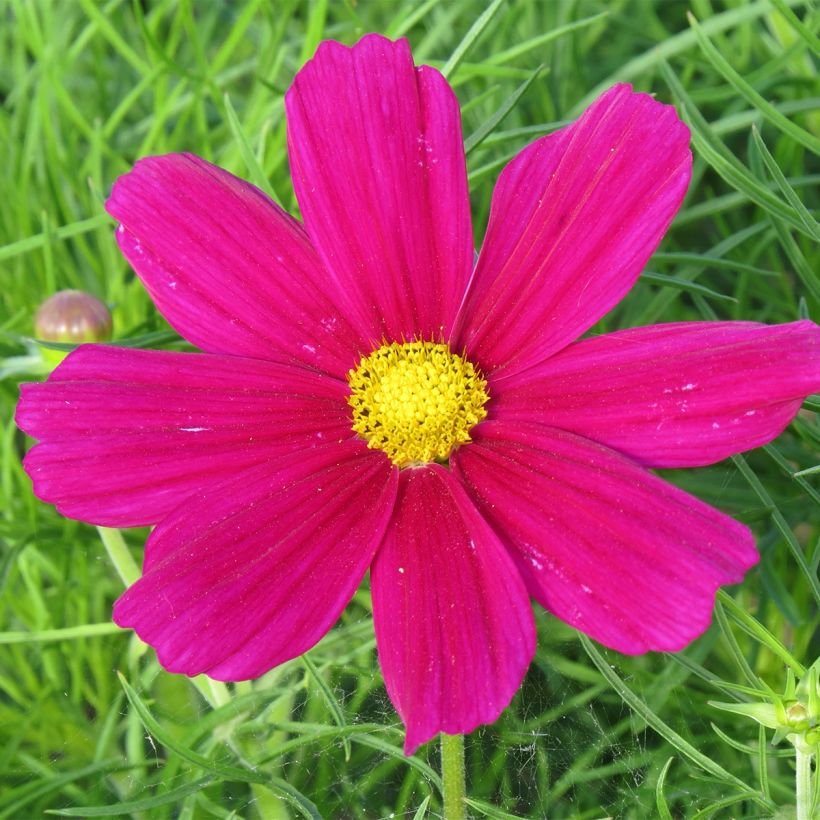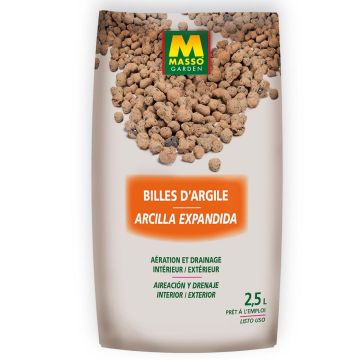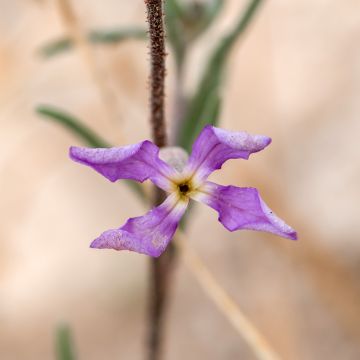

Graines de Cosmos sonata nain Royal Dwarf Carmine
Cosmos bipinnatus Sonata Carmine - Garden Cosmos
Cosmos x bipinnatus Sonata Carmine (Royal Dwarf Carmine)
Garden Cosmos, Mexican Aster
Unfortunately, the packet received only contains 1g, which is equivalent to 100 seeds instead of 3g.
Cathy, 31/01/2024
Special offer!
Receive a €20 voucher for any order over €90 (excluding delivery costs, credit notes, and plastic-free options)!
1- Add your favorite plants to your cart.
2- Once you have reached €90, confirm your order (you can even choose the delivery date!).
3- As soon as your order is shipped, you will receive an email containing your voucher code, valid for 3 months (90 days).
Your voucher is unique and can only be used once, for any order with a minimum value of €20, excluding delivery costs.
Can be combined with other current offers, non-divisible and non-refundable.
Home or relay delivery (depending on size and destination)
Schedule delivery date,
and select date in basket
This plant carries a 6 months recovery warranty
More information
We guarantee the quality of our plants for a full growing cycle, and will replace at our expense any plant that fails to recover under normal climatic and planting conditions.
Would this plant suit my garden?
Set up your Plantfit profile →
Description
Cosmos bipinnatus 'Sonata Carmine' (also known as Royal Dwarf Carmine) is a dwarf variety with brilliantly coloured flowers that will make a big impact in sunny flower beds with minimal care required. This stout cultivar stands out with its vibrant pink-red flowers with a small golden yellow centre. Sown in early spring, its seeds germinate quickly and the plants produce their flowers late into the season, above a slightly fragrant feathery foliage. This superb annual is just as delightful in sunny flower beds as it is in bouquets.
Cosmos Sonata Carmine is one of the many cultivars derived from this popular Mexican annual. The Sonata series is considered by professionals to be the most high-performing Cosmos selection for gardens. Related to Dahlias, Cosmos belong to the Asteraceae family and have the characteristic head-like inflorescence. 'Sonata Carmine' has particularly fine foliage, described as pinnately compound, reminiscent of fennel, and is slightly and pleasantly fragrant. This variety forms a dense and bushy clump of approximately 55 cm (22in) in height and 40 cm (16in) in width within 12 weeks, ready to bloom. The flowering, which is long-lasting if faded flowers are removed, begins in July and lasts until October, ceasing only with the first frost. The heads measure 4-5 cm (2in) in diameter and consist of a crown of slightly plicate petals surrounding a small golden yellow centre. The flowers attract numerous insects and butterflies, including the Monarch.
Capable of filling a flower bed from spring to frost, or colonising a slope, Cosmos 'Sonata Carmine' has colourful flowers that catch everyone's attention. Cosmos are beginner-friendly plants that are almost impossible to fail, as they can grow and bloom in most climates, including in chalky and fairly dry soil. This plant adds density to flower beds and lightness to the heavier blooms of perennials and the dense foliage of bushes. The carmine flowers stand out against the acidic green foliage of Alchemilla mollis, enhance the white roses of September, and the tall inflorescences of Verbena bonariensis. Cosmos Sonata Royal Dwarf is used in rustic displays, mixed with ash trees, love-in-a-mist, grasses like Stipa tenuifolia, or among perennials that love the sun as much as it does, such as bidens and rudbeckias. Its flowers have excellent vase life.
The ecological benefits: Sowing a pollinator-friendly plant like Cosmos in your garden will attract pollinating insects and butterflies throughout the summer. At the end of the season, let the last flowers produce their seeds, which are particularly appreciated by birds. This will encourage them to settle in your garden and play an important role in its ecosystem.
Report an error about the product description
Cosmos bipinnatus Sonata Carmine - Garden Cosmos in pictures


Flowering
Foliage
Plant habit
Botanical data
Cosmos
x bipinnatus
Sonata Carmine (Royal Dwarf Carmine)
Asteraceae
Garden Cosmos, Mexican Aster
Cultivar or hybrid
Other Cosmos seeds
View all →Planting and care
Two cultivation options are available to you: 1. Sowing under shelter in March-April, followed by transplanting into pots before final placement in your flower beds after the frost. 2. Direct sowing in May (after the last frost), followed by transplanting at a distance of 30 cm (12in) or simply thinning out excess seedlings. During the summer months, removing faded flowers will promote renewal and prolong flowering until autumn.
Sowing period
Intended location
-
, onOrder confirmed
Reply from on Promesse de fleurs
Similar products
Haven't found what you were looking for?
Hardiness is the lowest winter temperature a plant can endure without suffering serious damage or even dying. However, hardiness is affected by location (a sheltered area, such as a patio), protection (winter cover) and soil type (hardiness is improved by well-drained soil).

Photo Sharing Terms & Conditions
In order to encourage gardeners to interact and share their experiences, Promesse de fleurs offers various media enabling content to be uploaded onto its Site - in particular via the ‘Photo sharing’ module.
The User agrees to refrain from:
- Posting any content that is illegal, prejudicial, insulting, racist, inciteful to hatred, revisionist, contrary to public decency, that infringes on privacy or on the privacy rights of third parties, in particular the publicity rights of persons and goods, intellectual property rights, or the right to privacy.
- Submitting content on behalf of a third party;
- Impersonate the identity of a third party and/or publish any personal information about a third party;
In general, the User undertakes to refrain from any unethical behaviour.
All Content (in particular text, comments, files, images, photos, videos, creative works, etc.), which may be subject to property or intellectual property rights, image or other private rights, shall remain the property of the User, subject to the limited rights granted by the terms of the licence granted by Promesse de fleurs as stated below. Users are at liberty to publish or not to publish such Content on the Site, notably via the ‘Photo Sharing’ facility, and accept that this Content shall be made public and freely accessible, notably on the Internet.
Users further acknowledge, undertake to have ,and guarantee that they hold all necessary rights and permissions to publish such material on the Site, in particular with regard to the legislation in force pertaining to any privacy, property, intellectual property, image, or contractual rights, or rights of any other nature. By publishing such Content on the Site, Users acknowledge accepting full liability as publishers of the Content within the meaning of the law, and grant Promesse de fleurs, free of charge, an inclusive, worldwide licence for the said Content for the entire duration of its publication, including all reproduction, representation, up/downloading, displaying, performing, transmission, and storage rights.
Users also grant permission for their name to be linked to the Content and accept that this link may not always be made available.
By engaging in posting material, Users consent to their Content becoming automatically accessible on the Internet, in particular on other sites and/or blogs and/or web pages of the Promesse de fleurs site, including in particular social pages and the Promesse de fleurs catalogue.
Users may secure the removal of entrusted content free of charge by issuing a simple request via our contact form.
The flowering period indicated on our website applies to countries and regions located in USDA zone 8 (France, the United Kingdom, Ireland, the Netherlands, etc.)
It will vary according to where you live:
- In zones 9 to 10 (Italy, Spain, Greece, etc.), flowering will occur about 2 to 4 weeks earlier.
- In zones 6 to 7 (Germany, Poland, Slovenia, and lower mountainous regions), flowering will be delayed by 2 to 3 weeks.
- In zone 5 (Central Europe, Scandinavia), blooming will be delayed by 3 to 5 weeks.
In temperate climates, pruning of spring-flowering shrubs (forsythia, spireas, etc.) should be done just after flowering.
Pruning of summer-flowering shrubs (Indian Lilac, Perovskia, etc.) can be done in winter or spring.
In cold regions as well as with frost-sensitive plants, avoid pruning too early when severe frosts may still occur.
The planting period indicated on our website applies to countries and regions located in USDA zone 8 (France, United Kingdom, Ireland, Netherlands).
It will vary according to where you live:
- In Mediterranean zones (Marseille, Madrid, Milan, etc.), autumn and winter are the best planting periods.
- In continental zones (Strasbourg, Munich, Vienna, etc.), delay planting by 2 to 3 weeks in spring and bring it forward by 2 to 4 weeks in autumn.
- In mountainous regions (the Alps, Pyrenees, Carpathians, etc.), it is best to plant in late spring (May-June) or late summer (August-September).
The harvesting period indicated on our website applies to countries and regions in USDA zone 8 (France, England, Ireland, the Netherlands).
In colder areas (Scandinavia, Poland, Austria...) fruit and vegetable harvests are likely to be delayed by 3-4 weeks.
In warmer areas (Italy, Spain, Greece, etc.), harvesting will probably take place earlier, depending on weather conditions.
The sowing periods indicated on our website apply to countries and regions within USDA Zone 8 (France, UK, Ireland, Netherlands).
In colder areas (Scandinavia, Poland, Austria...), delay any outdoor sowing by 3-4 weeks, or sow under glass.
In warmer climes (Italy, Spain, Greece, etc.), bring outdoor sowing forward by a few weeks.



















































